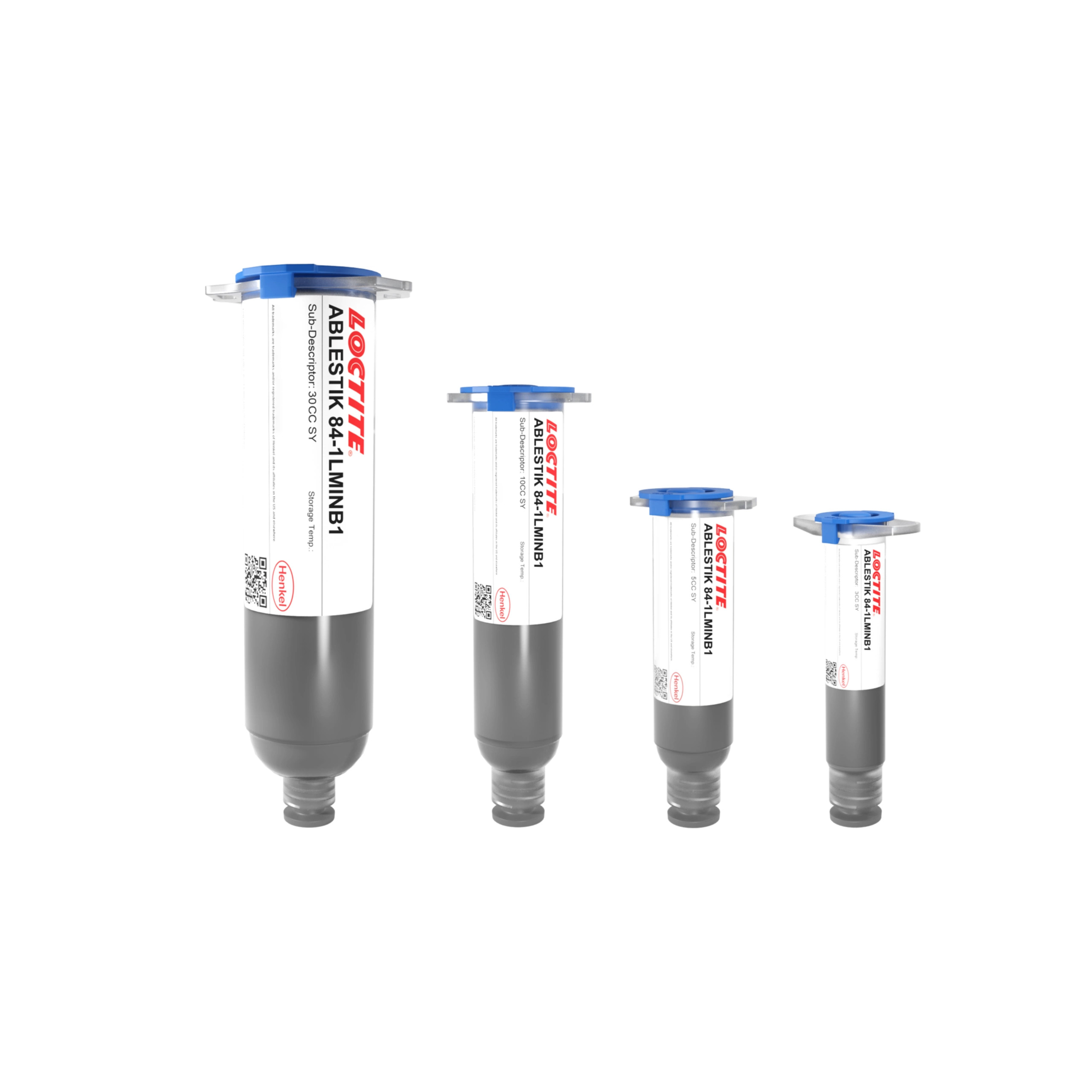LOCTITE ABLESTIK 84-1LMINB1
Harmonization Code : 3506.91.90.99 | Prepared glues and other prepared adhesives, not elsewhere specified or included; products suitable for use as glues or adhesives, put up for retail sale as glues or adhesives, not exceeding a net weight of 1 kg ; Adhesives based on polymers of headings 3901 to 3913 or on rubber; Other ; Other
Main features
- Electrically conductive
- Long work life
- Bonds to difficult to wet surfaces
Product Description
LOCTITE ABLESTIK 84-1LMINB1 die attach/assembly adhesive is formulated to bond difficult-to-wet surfaces such as palladium-silver capacitor terminations. This adhesive reduces capacitor shorting problems caused by resin bleed.
LOCTITE ABLESTIK 84-1LMINB1 meets the strict requirements of MIL-STD-883, Method 5011 and has very low NASA outgassing values. Namely 0.14% TML, 0.02% CVCM and 0.07% WVR.
Cure Schedule
- 1 hour @ 150°C
Technical Specifications
| General Properties | |
| Work life @25°C Work life @25°C Work life is the amount of time we have to work with a material until it is no longer able to be easily worked and applied on a substrate. It is based on the change in viscosity and it can rely on the application requirements. | 24 hours |
| Thermal Properties | |
| Glass Transition Temperature (Tg) Glass Transition Temperature (Tg) The glass transition temperature for organic adhesives is a temperature region where the polymers change from glassy and brittle to soft and rubbery. Increasing the temperature further continues the softening process as the viscosity drops too. Temperatures between the glass transition temperature and below the decomposition point of the adhesive are the best region for bonding. The glass-transition temperature Tg of a material characterizes the range of temperatures over which this glass transition occurs. | 90 °C |
| Thermal Conductivity Thermal Conductivity Thermal conductivity describes the ability of a material to conduct heat. It is required by power packages in order to dissipate heat and maintain stable electrical performance. Thermal conductivity units are [W/(m K)] in the SI system and [Btu/(hr ft °F)] in the Imperial system. | 3.9 W/m.K |
| Weight Loss @ 300°C | 0.2 % |
| Chemical Properties | |
| Water Extract Conductivity | 9.7 Ohm |
| Physical Properties | |
| Viscosity Viscosity Viscosity is a measurement of a fluid’s resistance to flow. Viscosity is commonly measured in centiPoise (cP). One cP is defined as the viscosity of water and all other viscosities are derived from this base. MPa is another common unit with a 1:1 conversion to cP. A product like honey would have a much higher viscosity -around 10,000 cPs- compared to water. As a result, honey would flow much slower out of a tipped glass than water would. The viscosity of a material can be decreased with an increase in temperature in order to better suit an application | 50,000 mPa.s |



